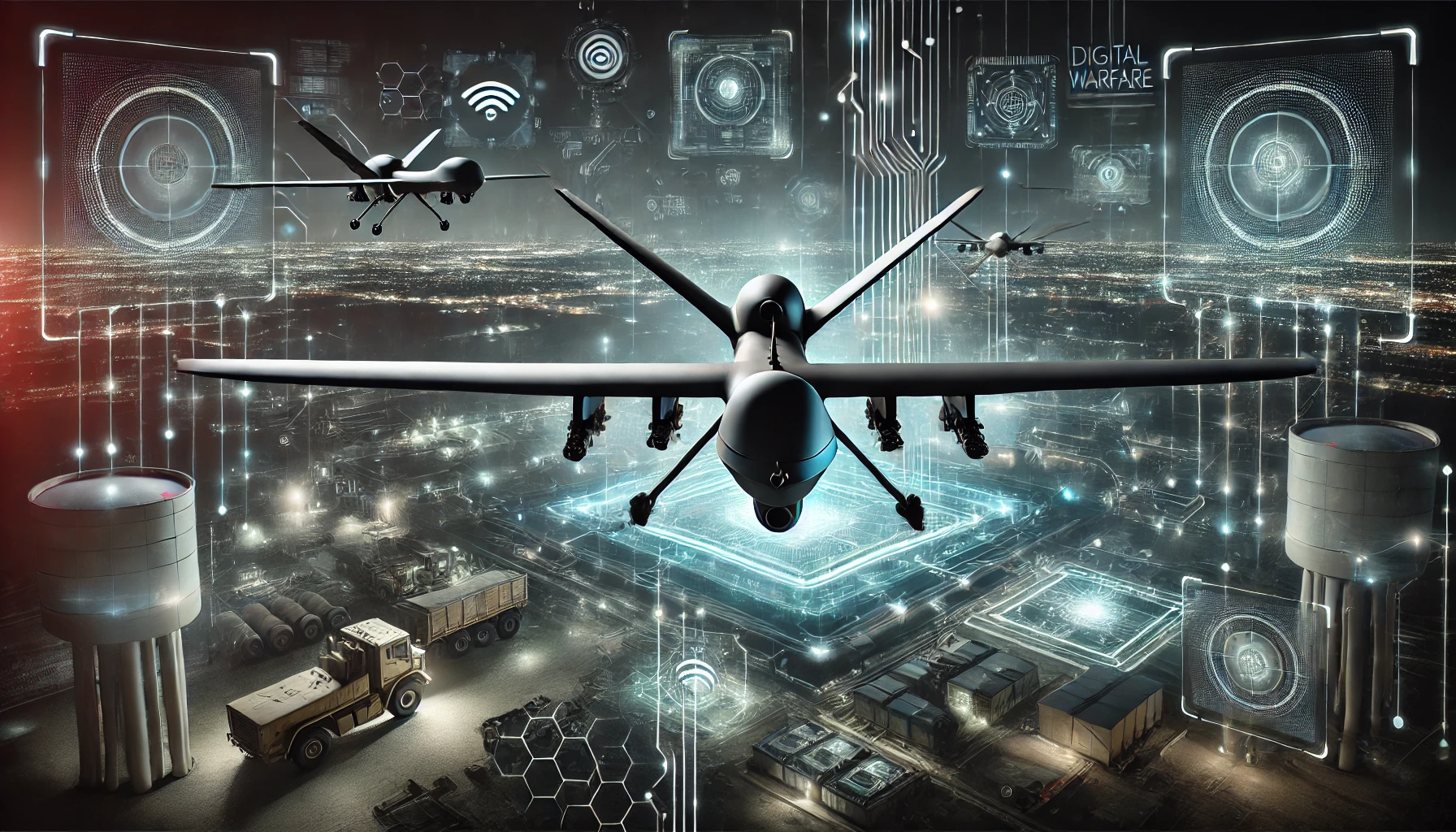
Unidentified Drone Incursions and Modern Security Challenges
Recent incursions by unidentified drones over three U.S. Air Force bases in the United Kingdom—RAF Lakenheath, RAF Mildenhall, and RAF Feltwell—have exposed critical vulnerabilities in airspace security. These incidents, reported between November 20 and 22, 2024, involved drones of unknown origin, prompting immediate deployment of British troops to bolster security around these installations. The Ministry of Defence (MoD) and U.S. Air Force are collaborating to investigate the purpose and potential threats posed by these drones, which are suspected to involve espionage or probing of defensive capabilities.
The nature of the incursions highlights the growing sophistication of unmanned aerial systems (UAS). These drones likely utilized advanced evasion and stealth technologies, reflecting trends observed in the global proliferation of low-cost yet highly effective drones in warfare. In conflict zones like Ukraine, Iranian-made kamikaze drones have demonstrated how inexpensive platforms can deliver devastating results. The incidents over the UK bases emphasize the increasing challenges of defending critical infrastructure against such unpredictable and adaptable threats.
Defense Limitations Amid Evolving Warfare
Efforts to counter drone threats are complicated by systemic issues in defense procurement and the misalignment of strategic priorities. On November 20, 2024, the MoD announced the cancellation of several key projects, including the Watchkeeper drone program, citing financial overruns and operational failures. Initially envisioned as a linchpin of the UK's surveillance capabilities, Watchkeeper suffered from severe reliability problems and delays, ultimately failing to meet modern operational requirements. Critics argue that this cancellation reflects an entrenched failure to anticipate technological advancements and the evolving needs of modern battlefields.
The rising prominence of drones and unmanned systems has coincided with advancements in artificial intelligence (AI), further complicating the security landscape. The integration of AI in modern warfare enables automated decision-making, swarm coordination, and improved target acquisition, creating significant strategic advantages. However, this also increases the risk of AI being weaponized by adversaries. Addressing NATO allies, Cabinet Office Minister Pat McFadden highlighted this escalating AI arms race, warning of the growing potential for AI-driven cyberattacks to disrupt critical infrastructure or influence ongoing conflicts, such as the war in Ukraine.
Implications for a World on the Brink of Global Conflict
The interplay between advancing drone technologies, AI capabilities, and geopolitical tensions has implications that extend beyond localized incidents. The war in Ukraine continues to act as a proving ground for next-generation warfare, where drones, cyberattacks, and AI-driven systems are employed at unprecedented scales. Iranian drones deployed by Russian forces and AI-supported decision-making systems have shifted the strategic calculus, allowing for rapid, decentralized operations. This evolving paradigm of warfare raises concerns about the potential escalation of conflicts into a broader, more destabilized global environment.
The recent drone incursions over the UK are symptomatic of an increasingly complex security environment in which non-state actors and adversarial governments exploit emerging technologies to probe vulnerabilities. The cancellation of projects like Watchkeeper reveals a defense infrastructure ill-prepared for the rapid pace of technological change. The lack of forward-looking investment in scalable and adaptive defense systems leaves critical gaps in readiness, exacerbating risks in an era where military dominance increasingly depends on technological superiority.
The Strategic Response: Lessons and Innovations
While the cancellation of outdated programs like Watchkeeper offers an opportunity for reevaluation, it also exposes a systemic lack of agility within defense procurement frameworks. Analysts, including those at Drone Wars UK, have criticized the MoD’s approach, citing the failure to incorporate lessons from previous program missteps. To address these challenges, future initiatives must prioritize resilience and adaptability, ensuring systems are capable of countering emerging threats, including autonomous drone swarms and AI-enhanced offensive operations.
Efforts to modernize defenses include the UK’s establishment of a Laboratory for AI Security, initially funded with £8.22 million, aimed at developing advanced cyber defense tools and fostering intelligence-sharing among NATO allies. These initiatives are critical for preparing against AI-driven warfare scenarios, where autonomous systems could be used to undermine critical infrastructure, disrupt communications, or neutralize defensive assets. However, experts warn that addressing these challenges requires sustained investment and international collaboration, far beyond what current initiatives provide.
Drone and AI Convergence: A New Frontier of Warfare
The convergence of drone and AI technologies signals a profound shift in the nature of warfare. Autonomous drones equipped with AI decision-making capabilities can execute complex missions without direct human input, effectively functioning as "force multipliers" on the battlefield. Swarm technology further amplifies this potential, enabling coordinated attacks that overwhelm traditional defense systems. These advancements, coupled with AI's ability to analyze vast datasets in real-time, offer unparalleled strategic advantages but also amplify the risks of miscalculation or unintended escalation.
As geopolitical tensions rise, the potential for World War III scenarios becomes more plausible, driven by the rapid integration of AI and drone technologies into military strategies. The war in Ukraine has already demonstrated how these technologies can redefine operational norms, from strategic deterrence to tactical engagement. The challenge lies in managing these advancements to avoid catastrophic outcomes while ensuring readiness for a future where technological superiority is synonymous with national security.
The Way Forward: Rethinking Defense for a New Era
The incidents over the UK, coupled with the broader failure of defense programs to adapt, highlight the urgent need for a paradigm shift in defense planning and procurement. Governments must prioritize investment in counter-UAS technologies, AI-driven detection systems, and flexible operational frameworks capable of addressing multifaceted threats. The future of warfare demands not only technological innovation but also the foresight to anticipate and mitigate the unintended consequences of these advancements.
In an era where drones, AI, and cyberwarfare converge, the stakes have never been higher. Nations that fail to adapt risk ceding strategic advantage to adversaries who exploit these technologies with greater agility and effectiveness. As the global community stands on the brink of potential conflict, the lessons of today must inform the strategies of tomorrow, ensuring that the pursuit of innovation aligns with the imperatives of security and stability.








